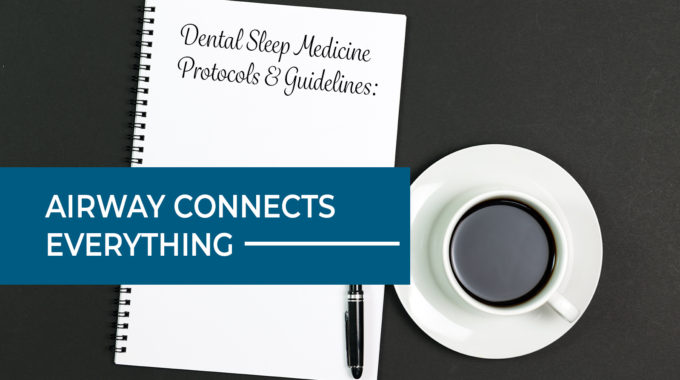
Airway Connects Everything
By Steve Carstensen DDS
January 2020 DSM Insider Magazine
Do you find yourself confused, and maybe even a little scared, by what you are hearing about dental sleep medicine (DSM) practice? You think you are safe in what you do, but someone tells you about another dentist who got in trouble for ‘practicing medicine without a license.” You read guidelines by one organization, but another group says something completely different. What do you need to know?
There is only one regulatory body that controls what is legal for you to do –your state dental board. Another legal restriction on our practices is in the criminal code, where fraudulent behavior is defined. Stepping over those lines endangers your license, but that will be the smaller of the problems you will face.
There are nine steps to making this work out well for you. The first few you’ve heard plenty about: Understand why you are wanting to treat airway patients in the first place, bring your team onboard with excellent training, and begin screening every patient.
The next three get a little trickier: Use objective evaluation, know your limitations, and expand your scope. Let’s look at these a bit closer.
A: Use Objective Evaluation. The ADA says we should use some measuring device to assess whether our therapy is effective. We do this every day managing periodontal disease with pocket probing. Other groups say measurement is for physicians only. This issue is not yet settled at the state board level.
B: Know Your Limitations. Dentists get pretty great education in professional school, but our physician colleagues keep more of the physiology in mind during medical decision making. On the other hand, they disavow the TMJoint.
C: Expand Your Scope. You can perform services within your license as long as you are trained to do so. Since you didn’t get any DSM lectures in school, you have choices about where you learn what is needed to practice safely.
The final three steps are these: Form a team, commit to follow-up, and keep in mind the first therapy choice may not last a lifetime. You can’t do DSM with only your resources. You need diagnosing physicians, surgeons, a medical biller, software people and myofunctional therapists. Since DSM is disease management, your patients need help for a lifetime. Someday, they’ll tell you they ‘went back to CPAP’ and you’ll be OK with it.
Join me next month in Clearwater Florida for the North American Dental Sleep Medicine Symposium where I’ll be presenting on __. You’ll see plenty to help you make sense of these steps that must be taken! I look forward to seeing you there.


